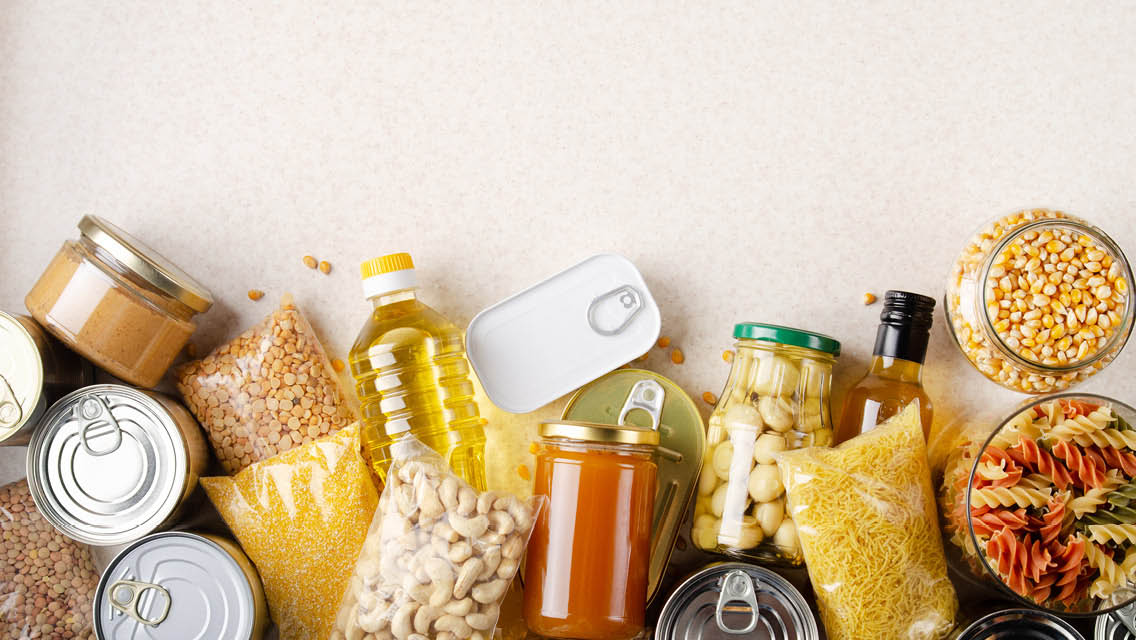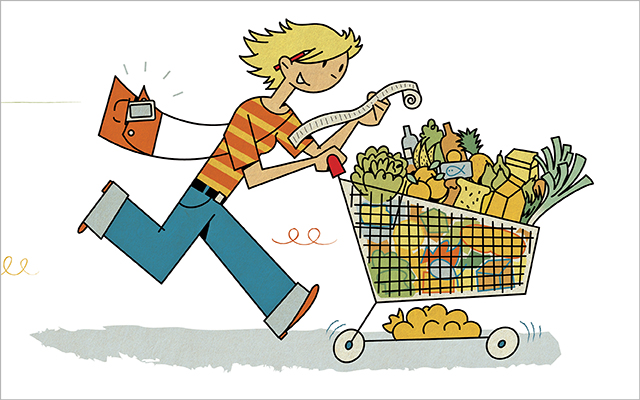Several years ago, the biggest challenge facing those wanting to dine more nutritiously was education. Today, I’m seeing more and more people who are pretty well informed about food and nutrition. The explosion of cooking and nutrition information available to us – even in the general media – is staggering. We are getting much smarter about the importance of eating a wide variety of whole, unrefined foods, and of lowering our intake of sugars and unhealthy fats. We’re more likely to have healthy cookbooks on our kitchen shelves and to have healthy-eating magazines on our coffee tables. Most basic nutritional and cooking questions we have can often be answered with a few clicks of a mouse.
Today, the largest obstacle we face in healthy cooking is not so much a deficit of nutritional knowledge as it is a deficit of the time we need to apply that knowledge. We want to get into the habit of preparing healthier meals in our homes, but we’re challenged to cobble together the various moments of shopping and cooking required to do the job.
If you ask me, the secret to successfully skirting this culinary quagmire is a properly stocked pantry. You don’t need a separate, cute little room off the kitchen like your grandma had (although gracious, old-fashioned pantries are always nice). You just need to have the right foods on the shelf at the right time so you can be confident in turning out a great meal whenever you need to – without hours of planning or forethought.
Time Tradeoffs
Yeah, I’m a chef, but I have to pick up the dry cleaning and walk the dog just like the next guy. And after a busy working day, I want to spend as little time in the kitchen as possible. With a quality selection of jarred, dried, frozen and other shelf-stable foods in my pantry, not only can I put a great, healthy meal on the table in a flash, but I spend less time making odd jaunts to the supermarket for dinner. I make fewer impulse purchases. I also pick up perishable items like meat, milk and tender lettuces only when I need them, and because less food ends up going to waste, I save money.
A well-stocked pantry ensures that I eat more nutritious and health-conscious meals at home. When I don’t stock my favorite goodies and staples, it becomes all too easy to pick up the phone and order a pizza or dive into some processed foods in a last-resort grab for convenience.
The key to stocking a healthy pantry lies in carefully avoiding most of the overly processed, ready-made foods that are heavily marketed as timesavers. Such foods tend to be made of low-quality, refined ingredients, and offer reduced ratios of most nutrients and fiber. They also tend to be high in added sugars and fats, including unstable, rancid oils and unhealthy trans fats. Moreover, the chemical additives and preservatives included to extend the shelf life of these types of foods represent real nutrition and health compromises. The trouble is, when most people think of pantry stocking, these are too often the first foods that come to mind. (Looking for a few time saving convenience foods? See “Convenience Foods That Are Worth It When It Comes To Meal Prep“.)
Behind My Cupboard Door
So what’s in my cupboards these days? Look inside and you’ll see that I try to organize my shelves by the food styles I enjoy most, rather than just by food type (cans on one shelf, dried foods on another, etc.). That way, when I open the doors, I can see whole meals waiting to be made and I’m not tempted to turn to processed or pre-packaged food.
I keep my Mediterranean and Italian items, such as canned tomatoes (San Marzano tomatoes are a must), anchovies, Spanish olive oil (Nunez de Prado or L’estornel), chickpeas and so on, all in the same area so when I want to whip up something with a southern European flair, I can. My Asian shelf is loaded with soy sauce, oyster sauce, mirin, instant dashi, Thai fish sauce and other Eastern staples.
I have a separate area designated for my beans, pastas and farinaceous (flourlike) foods. Lentils (canned or dried) are especially good to have around because the thin, split yellow or red ones make for the best quick curries (see recipe below) I know of and they’re loaded with protein. I keep plenty of whole grains and rices on hand as well.
I stock my baking goodies, including nuts, dried fruits and high-quality chocolate all on one shelf. That way, if I want dessert, I can make it (a cobbler only takes 25 minutes and most of that is oven time) without being constantly tempted by a box of ready-made sweets.
In my cheese drawer, I like to keep some high-quality grating cheeses (like Pecorino Romano and Parmesan Reggiano) for seasoning pastas and vegetable gratins (chunks of hard cheeses stay fresh much longer than soft or grated kinds). I also stock both plain and flavored yogurts (organic is best and lasts longest) for snacks, desserts and to cool spicy stews when I need to.
In my freezer, I keep Zip-Loc bags filled with chicken and shellfish stock, portioned into handy 1- and 2-cup quantities. I freeze them flat, on cookie sheets, and then stack them vertically to save room in my reach-in. Frozen this way, they defrost in a flash under cold running water. Busy? You can now get decent organic stocks packaged (like soymilk) in vacuum-packed boxes that you can keep unrefrigerated on the shelf. For meats, I prefer to buy chicken, beef, pork and seafood fresh whenever possible, but I do keep some of my favorite cuts in the freezer for easy access when I can’t make it to the store. (See “The New Frozen Dinner” for more frozen food tips and recipes.)
Then there’s produce. While it is true that fresh, whole foods don’t keep as long as their cardboard-clad compatriots, they are an absolute must in maintaining a healthy diet, and many can be stocked every other week. Fresh foods are essential for adding flavor, nutrition and substance to any meal.
What do I keep on hand for fresh foods? Onions and garlic are very stable when kept in a cool, dark place (I keep my garlic in the fridge, and ginger root freezes beautifully). But resist buying 10-pound bags of onions unless you’re darn sure you’ll use them before they spoil.
I keep sturdy vegetables like broccoli, carrots and green beans in my crisper and find they last quite a while when stored properly. Cucumbers and peppers also keep well and work in a wide variety of dishes. I can’t live without scallions and fresh herbs, which I keep refrigerated in small cups of water, like flowers. They last forever when stored this way and add enormous appeal to otherwise shelf-sourced meals.
Finally, I keep some hard fruits (like apples) and some citrus fruits (like tangerines and oranges) because, besides being great snack items, they can also be used to whip up quick desserts and can just as easily be incorporated into a salad or main course. Don’t overlook frozen produce, either, much of which is excellent. Frozen raspberries and peaches are great in smoothies. Spinach and peas are super in stir-fries.
Keep it fresh
I’m sure you have your own favorite dishes. Just make up a list of the foods you like best and then detail the ingredients required to whip them together in short order. Use the list to keep your pantry inventory well stocked and up-to-date.
When it comes to perishables, buy what you can use up in, at most, three- to five-day increments. To add fresh taste to dried, canned and frozen staples, keep plenty of acidic foods (like tomatoes, lemons and limes) on hand. These foods brighten up the flavors of other edibles and make great contrasts with most proteins, beans and grains. So do olives, pickles, capers and other vinegared or preserved foods. Beyond that, just buy what looks best and what’s seasonal. Then rely on your pantry for the rest of your daily inspiration.
Recipe
Vegetable Curry in a Hurry
I cook a lot of “brown and braise” dishes, or one-pot meals. My spice cupboard always comes in handy for accenting these dishes, which can cook for two to 20 minutes, depending on the ingredients, and allows me to use lots of pantry items. Try this delicious curry dish with some basmati rice and a cool cucumber salad seasoned with mint and lemon juice. It serves three to four persons as part of an evening meal.
Cooking time: 20 minutes.
- 1 tbs. minced fresh ginger
- 2 tsp. minced fresh garlic
- 2 tbs. Madras-style curry powder
- 1 tsp. ground cumin
- 1 tsp. ground coriander
- Several pinches red chili flakes
- 14 oz. can chopped tomatoes
- 1 chopped onion
- 2 chopped carrots
- 2 cups frozen spinach
- 14 oz. can chickpeas
- 2 cups chicken or vegetable stock
- 1 tbs. olive oil
Directions
- Heat a large pan over medium heat. Rinse the chickpeas and drain, set aside. Rinse the spinach and defrost, squeeze dry and reserve.
- Add the oil to the pan and swirl once or twice to coat the entire surface. When the oil ripples and is aromatic, add the ginger, garlic, onion and spices and stir several times. Cook for a minute or two and add the carrots, spinach and chickpeas. Stir once or twice and add the stock and tomatoes; bring to a simmer. Adjust heat to maintain a simmer and cook until the liquids in the pan have reduced by 75 percent.
- Season with sea salt and a squeeze of fresh lime and serve immediately, garnishing with a dollop of yogurt if you like. For a fun twist, try upping the stock amount by a cup and throwing in a half cup of lentils.
This article has been updated. It was originally published online on September 1, 2003.





This Post Has 0 Comments